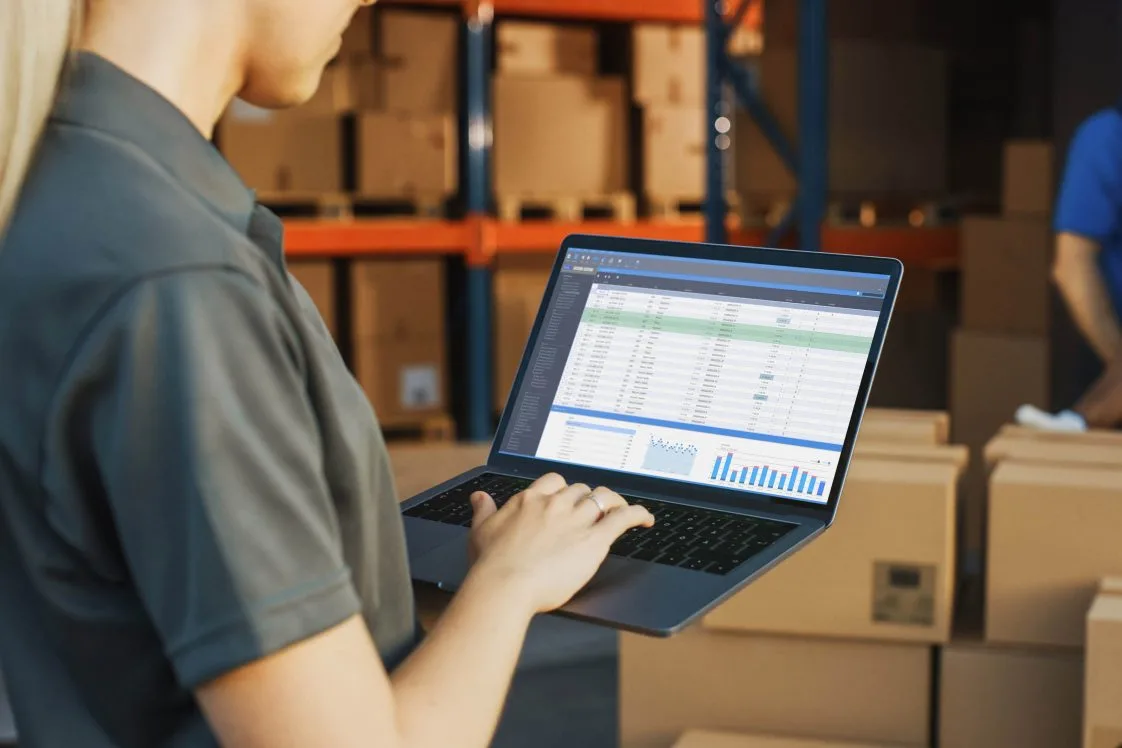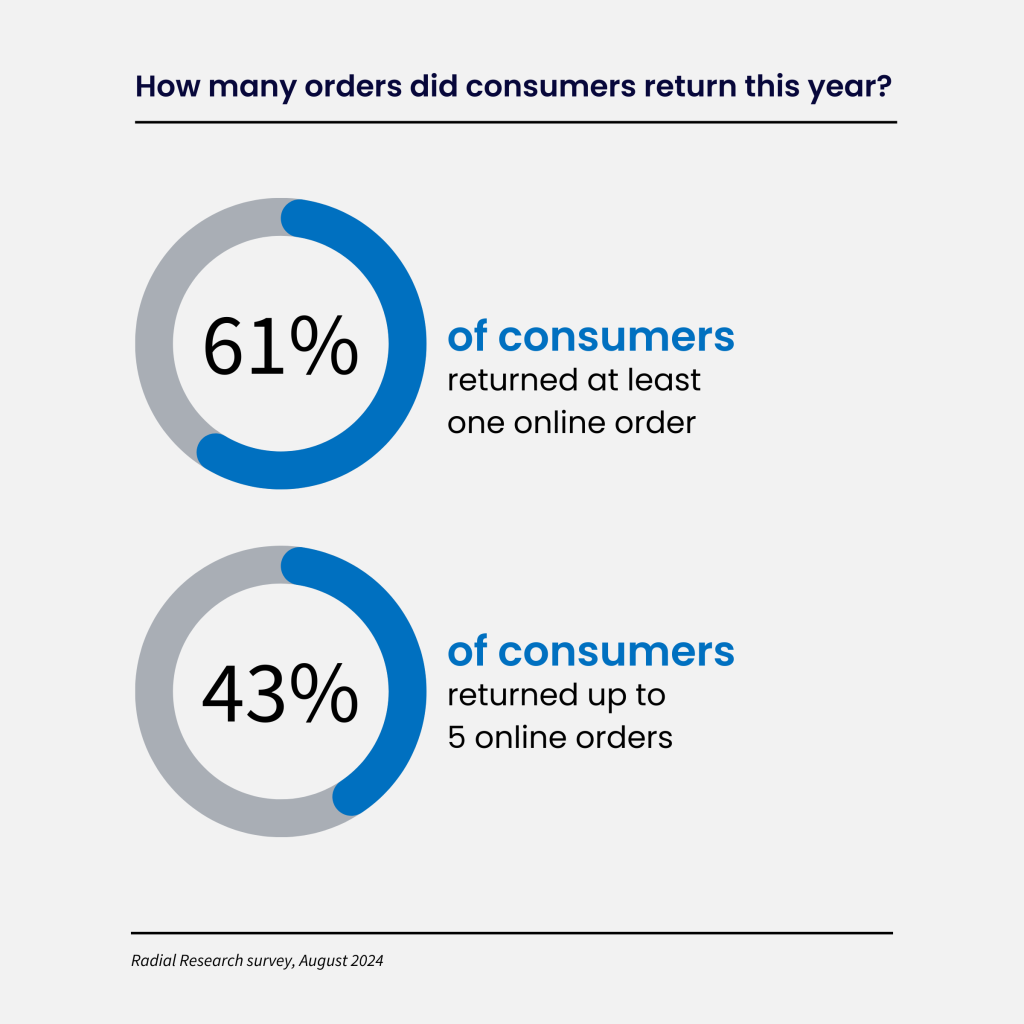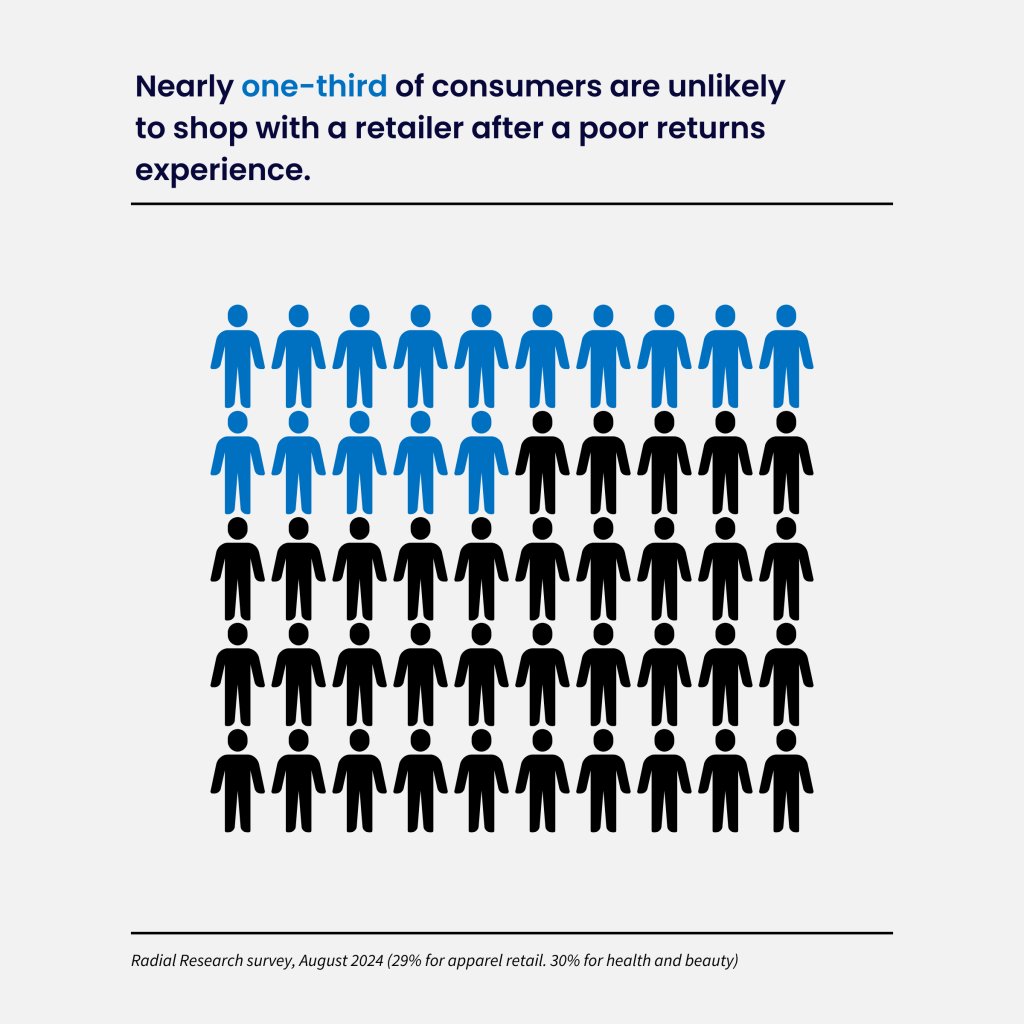Radial Research: Returns Create Challenges for Both Consumers and Retailers

Returns create challenges for both consumers and retailers. And these challenges are accelerating in 2024.
Total returns for the retail industry amounted to $743 billion in merchandise in 2023, which prompted many retailers to implement new returns policies. Many retailers are experimenting with return charges. Others, like Amazon, now let customers keep items for a discounted refund as the price of reverse logistics skyrockets.
Retailers know that efficient and hassle-free returns improve customer experience and satisfaction. Our most recent Radial Research survey gathered insights on consumers’ return experiences, challenges, and preferences to identify trends and support retailers in creating seamless return experiences— while reducing operating costs.
Consumers Buy Multiple Items While Planning to Return Them
Sixty-one percent of consumers returned at least one online order in the last year. Forty-three percent returned up to 5 orders. Of those, apparel, shoes, and accessories are returned more often than any other products, with 64% of consumers making returns in at least one of those categories.

Apparel, shoes, and accessories are returned more often than any other products, with 64% of consumers making returns in at least one of those categories.
Many customers purchase clothing and apparel items intending to return most of the order. Retail Dive found that 87% of consumers purposefully order extra items to try on at home. They then return what they do not want. Retailers call this new trend “bracketing.”
Bracketing is when a shopper buys multiple sizes, colors, or styles of a product with the intent to return most of the purchased items. For retailers, this means that margin calculations, inventory management, and operations workflows become more unpredictable. But consumers like bracketing. They avoid in-store fitting rooms and confusing online charts for the comfort of at-home fittings.
The Returns Process Creates Frustrated Consumers
Even when returns are planned, the process isn’t always seamless. According to Radial’s research, refund processing was the top complaint of consumers throughout the return process.
Twenty percent of consumers say they experienced long wait times for refund processing for online orders of clothing, apparel, or shoes. Another 13% of consumers experienced similarly long wait times for refunds on health and beauty orders.
Packing items for return shipping was also a common issue, particularly for online apparel orders. Eighteen percent of consumers experienced issues with return packaging or labels and 16% struggled to find return instructions.
Do Return Issues Affect Brand Loyalty?
Negative return experiences affect brand loyalty—but it may not always end retail relationships.
For clothing and apparel brands, 29% of consumers would be unlikely or very unlikely to shop with a retailer after a poor returns experience. Similarly, 30% of consumers would be unlikely or very unlikely to shop with a health and beauty retailer after a poor returns experience. No retailer wants to lose 30% of potential repeat purchases, which is why brands should consider consumer feedback when optimizing their reverse logistics processes.

Nearly one-third of consumers are likely to skip future shopping with retailers who offer poor returns experiences.
How Brands Create Seamless Return Experiences
Retailers constantly strive to create smooth return experiences for consumers while also streamlining reverse logistics to reduce costs. Here’s how retail leaders build strong return experiences to maintain customer relationships and build brand loyalty.
Offer an Omnichannel Returns Process
Consumers want both online and in-store return options. Which means retailers need to implement omnichannel returns processes where possible.
When they need to start a return, 70% of consumers prefer to use an online return portal when returning clothing, shoes, or apparel. Similarly, 57% of consumers prefer to use an online return portal when returning health or beauty products.
Many consumers want an in-store return option, however. Twenty-eight percent of consumers prefer to return clothing and apparel in-store, and 32% of health and beauty shoppers return in-store as well.
A third-party logistics partner like Radial helps retailers develop an end-to-end order management system, with greater visibility into in-stock, purchased, and returned items to keep products and revenue flowing.
Limit Return Fees
Return fees pose a barrier for consumers — but retailers are caught between managing the cost of returns and risking customer relationships if they make returns too difficult.
Nearly half of consumers (48%) will avoid making a return if there is an out-of-pocket cost for shipping. Another 43% are hesitant to pay the fee but may consider it depending on the cost of the return.
Some retailers find success by offering free returns for orders over a certain value, or within a specific period after purchase. Others offer free returns in store but pass additional fees on to customers. Retail Dive recently found that, when faced with charges for online returns, eight in 10 shoppers would be more likely to return an item in stores.
Retailers should carefully consider the price sensitivity of their target market alongside their reverse logistics costs as they develop return fee policies.
Offer Longer Return Windows
According to Radial’s research, 60% of respondents expect retailers to offer a traditional 30-day return window. The other 40% of respondents expect retailers to offer longer windows, with 28% expecting a 60-day return window and 12% expecting a 90-day return window.
According to recent Loop data, some brands have found success offering a longer return window for exchanges and store credit, and a shorter window for refunds. While inventory management can be a challenge with longer return timeframes, retailers may consider leveraging this approach to ensure return shoppers.
Streamline the Refund Process
The clock starts ticking once consumers ship their returns.
Most brands write their return policies with a clear timeframe for refund processing— and today’s experts recommend that even small businesses strive to process customer refunds within 7 working days.
But consumers still expect refunds beyond specified return windows. Fifty-seven percent of consumers have tried to make a return outside of the retailers specified return window—and they still expect a timely refund. Of those who tried to make a return after a retailers’ return timeframe, 62% expected a full refund or an equivalent store credit.
During peak shopping periods when return volumes are high, brands may struggle to keep up with refund processing. This is where a third-party eCommerce fulfillment partner can help. For example, Radial’s team can help you streamline return processes to make sure customers get their refunds in a timely manner—and ensure products are ready for re-sale as soon as possible.
Practice Sustainable Returns
Per Radial’s research, 50% of consumers feel that sustainability is important or very important in the returns process. This underscores the need for retailers to invest in sustainable packaging and shipping practices. A Radial Research survey this spring found that:
- 30% of consumers think online retailers should use packaging made from recycled materials
- 29% think online retailers should use reusable packaging that can be repurposed or refilled
- 23% think online retailers should implement more efficient packaging designs to minimize waste
Brands can invest in sustainable, reusable packaging for both delivery and returns to meet customer expectations.
Consider Pick Up Services
Some shipping companies recently adopted pick up services that will come to customers to pick up returns. Only 16% of consumers have used this service, but 43% said they would be willing to use it if it was free. Another 20% of consumers would use this service over any other return option, depending on the fees.
While convenience is an important factor for consumers, most do not prize convenience over price. As package pickup services become more affordable and gain popularity, retailers may need to factor these partner relationships into their reverse logistics process.
It’s Time to Invest in Returns Management
Returns are a cumbersome but necessary part of any successful eCommerce business. Radial is here to help.
Radial has been helping retailers streamline their returns management for more than 30 years. We have the technology, partners, and operational expertise to set up a program that is customized for your business needs and makes the experience as easy as possible for your customers. Returns are inevitable, but we can reduce the costs and hassles associated with the eCommerce returns process.
Learn how Radial can help you with eCommerce fulfillment.
